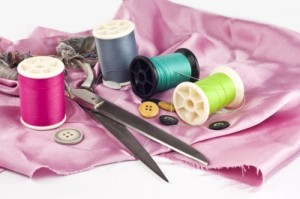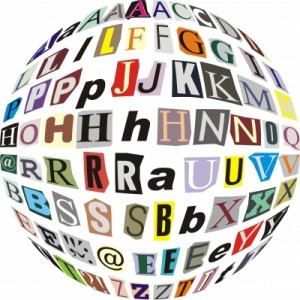Many of you know that I volunteer for Iowa’s Destination ImagiNation® program, which is focused on promoting creativity, teamwork and problem-solving among young people who are of pre-school through university age. My husband and I originally became involved through our son, who participated on a team. Eventually I became a Team Manager and my husband an Appraiser; now our son is graduated from college and living his own life in Chicago as we continue to volunteer for the program as state Board members wearing various hats. This program, which is near and dear to our hearts, is especially meaningful to me since I pursue my own brand of creativity through my writing and handmade projects.
One of the tasks all Destination ImagiNation (DI) teams are charged with is to manipulate materials effectively in order to generate unique (read: creative) solutions to challenges. In DI jargon, this means that all materials can be identified as connectors, controllers and/or extenders, each with its own set of properties. The first year that I managed a team of six middle school boys, it was apparent that they were bright, inquisitive and imaginative, but also that they were handicapped by a lack of knowledge about the materials available to them, and how they could make them work. They were too young to drive, of course, and didn’t have a lot of spending money, so they did not spend their free time in stores, where they would have been exposed to potential materials for the Team Challenge they had to solve during the season.
To help remedy my team’s lack of exposure to different types of materials, I sent the boys off on various scavenger hunts to different types of stores, where they were asked to generate lists of connectors, extenders and controllers. They were told that connectors, extenders and controllers can be used alone or in combination with other materials, that connectors are used to fasten or hold things together, that extenders are used to make materials longer, and controllers are used to guide or contain materials. The lists my team generated became important resources as the season progressed and the team sought unique solutions to challenges. For example, the team used sewing machine bobbins as pulleys, a type of controller. They discovered that PVC pipe, which comes in tube and joint forms, can be used as connector, extender or controller, often at the same time.
 I sent my team to a craft store, a home improvement center, an office supply store, and a fabric store. One of my team’s biggest surprises was that a fabric store contains a broad range of connectors, not just fabrics and sewing notions for costumes. They also learned that a fabric store is an important source for adhesive products. Did you know, for example, that Jo-Ann Fabrics has a free glue guide that describes 8 brands of adhesives, or a total of 58 products? The materials related to these adhesives include fabric and trims, leather, beads, jewelry findings, paper, cardboard, plaster, felt, Styrofoam®, glass, crystal, plastic, vinyl, metal, wire, wood and more. If your local store does not have one of these guides, you can contact the corporate headquarters and ask where you can get a copy: Jo-Ann Fabrics Corporate Office | Headquarters, 5555 Darrow Road, Hudson, OH 44236, Tel. 330-656-2600.
I sent my team to a craft store, a home improvement center, an office supply store, and a fabric store. One of my team’s biggest surprises was that a fabric store contains a broad range of connectors, not just fabrics and sewing notions for costumes. They also learned that a fabric store is an important source for adhesive products. Did you know, for example, that Jo-Ann Fabrics has a free glue guide that describes 8 brands of adhesives, or a total of 58 products? The materials related to these adhesives include fabric and trims, leather, beads, jewelry findings, paper, cardboard, plaster, felt, Styrofoam®, glass, crystal, plastic, vinyl, metal, wire, wood and more. If your local store does not have one of these guides, you can contact the corporate headquarters and ask where you can get a copy: Jo-Ann Fabrics Corporate Office | Headquarters, 5555 Darrow Road, Hudson, OH 44236, Tel. 330-656-2600.
So, what does all of this have to do with fleshing out your ideas, which is part of the title of this post? One way to solve the type of problem that the boys on my Destination ImagiNation team had—namely, to generate as many options as possible in regard to locating connectors—is very similar to the challenge facing anyone who creates anything, whether it’s a story or poem, a sculpture, a scrapbook or fiber art. Our goal is always the same: to come up with a unique perspective that reflects our goals and dreams. Before we can get to that point, however, we have to generate a lot of ideas while ignoring the Editor standing behind our backs, picking apart our ideas. We need to pay attention to novelty, even if it seems odd or crazy or impossible. And we need to think about ways to combine these different ideas because doing so might lead to something really new and different.
 Beginning this idea-generation process can seem daunting if you don’t have a fun-but-strategic way to attack it. One deliberate method (and certainly not the only one!) of coming up with ideas is to use what’s called ABC brainstorming. This is as simple as drawing a 2-column grid with the letters of the alphabet in the first column, and leaving the second column blank for those ideas you’ll be adding later. Each idea should begin with one of the letters of the alphabet. You don’t have to use all the letters, but it’s part of the fun to try to do so. If you’re more of a visual person, draw a mind map instead, with letters inside clouds. You can have jagged lines of lightning pointing to your ideas.
Beginning this idea-generation process can seem daunting if you don’t have a fun-but-strategic way to attack it. One deliberate method (and certainly not the only one!) of coming up with ideas is to use what’s called ABC brainstorming. This is as simple as drawing a 2-column grid with the letters of the alphabet in the first column, and leaving the second column blank for those ideas you’ll be adding later. Each idea should begin with one of the letters of the alphabet. You don’t have to use all the letters, but it’s part of the fun to try to do so. If you’re more of a visual person, draw a mind map instead, with letters inside clouds. You can have jagged lines of lightning pointing to your ideas.
If the boys on my DI team had used ABC brainstorming (which I didn’t know about at the time), their list of connectors at the fabric store might have looked something like this:
A – adhesive tape
B – brads, buckles, beading cord, barrel clasps, bobby pins, bar pins, buttons, bra extenders, binding clips
C – craft glue, chain, chenille stems, cotton belting, cord, clothesline, clip rings, cable cord
D – double-sided tape, duct tape, doll joints, D-rings, decorator nails
E – eyelets, E-6000 adhesive, embroidery floss, elastic
F – floral tape, foam mounting tape, felt glue, fabric glue, foam glue, fusible bond tape
G – glue sticks, gem glue, grommets, gum
H – hemp cord, hooks & eyes, heat set fabric glue
I – interfacing (fusible)
J – jewelry findings, jump rings, jute
K –
L – laminating pouches, lobster clasps, leather cord, lanyard hooks
M – Mod Podge, magnets, mending tape
N –
O –
P – paddle wire, poster putty, pins
Q – quilter’s tape
R – ribbon, raffia
S – stem wire, screw posts, super glue, spring rings, safety pins, split rings, stretchy cord, snap fasteners, swivel clasps
T – twine, transparent tape, tacky glue, toggle clasps, thread, thumb tacks
U –
V – Velcro®
W – wire
X – Xyron adhesives
Y – yarn
Z – Zots (adhesive dots), zippers
If you sell handmade products, as I do, can you imagine how you might use this tool to generate ideas about new products, or improvements to them? If you’re a story writer, maybe you can use this tool to generate the first sentence of many different stories. If you paint or draw or sculpt, perhaps you can generate a list of adjectives describing qualities or emotions you want to bring to your work—a series of creative prompts, if you will. How can you imagine using this tool in your work? Do you use a deliberate method to generate ideas?
© 2011 Judy Nolan. All rights reserved. Images provided by FreeDigitalPhotos.net. Hover over image to locate the gallery of each digital artist.

What a great idea! I can definitely use this in my scrapbooking!
Very interesting, Judy! This would be a great tool in tagging and writing descriptions.
Your post is very informative. It’s nice of you to write about their adventures. More photos would be nice, if you are able. I’m sure the teams would be thrilled. We use that method of the alphabet idea generator in AlphabeThursday, a blog post series with Jenny Matlock’s “Off on my tangent” blog. This coming week is the 4th round. Last alphabet, I looked for zentangles and drew them. This alphabet, I plan to make a children’s book with my alphabet drawings. {:-D
What a great sounding project, Judy! It is great that you have continued to serve the needs of kiddos even though your son is no longer involved.